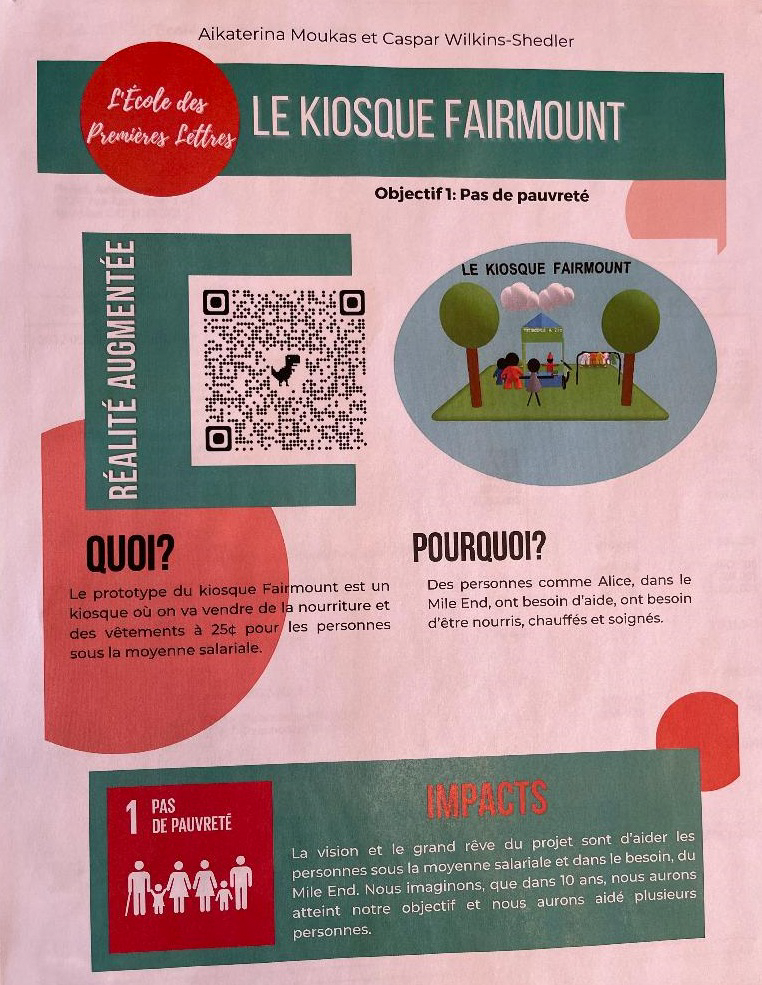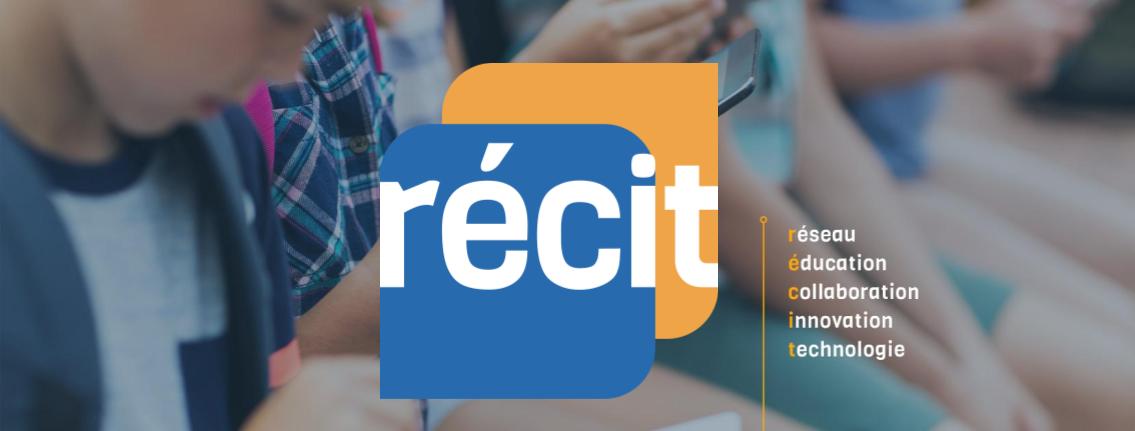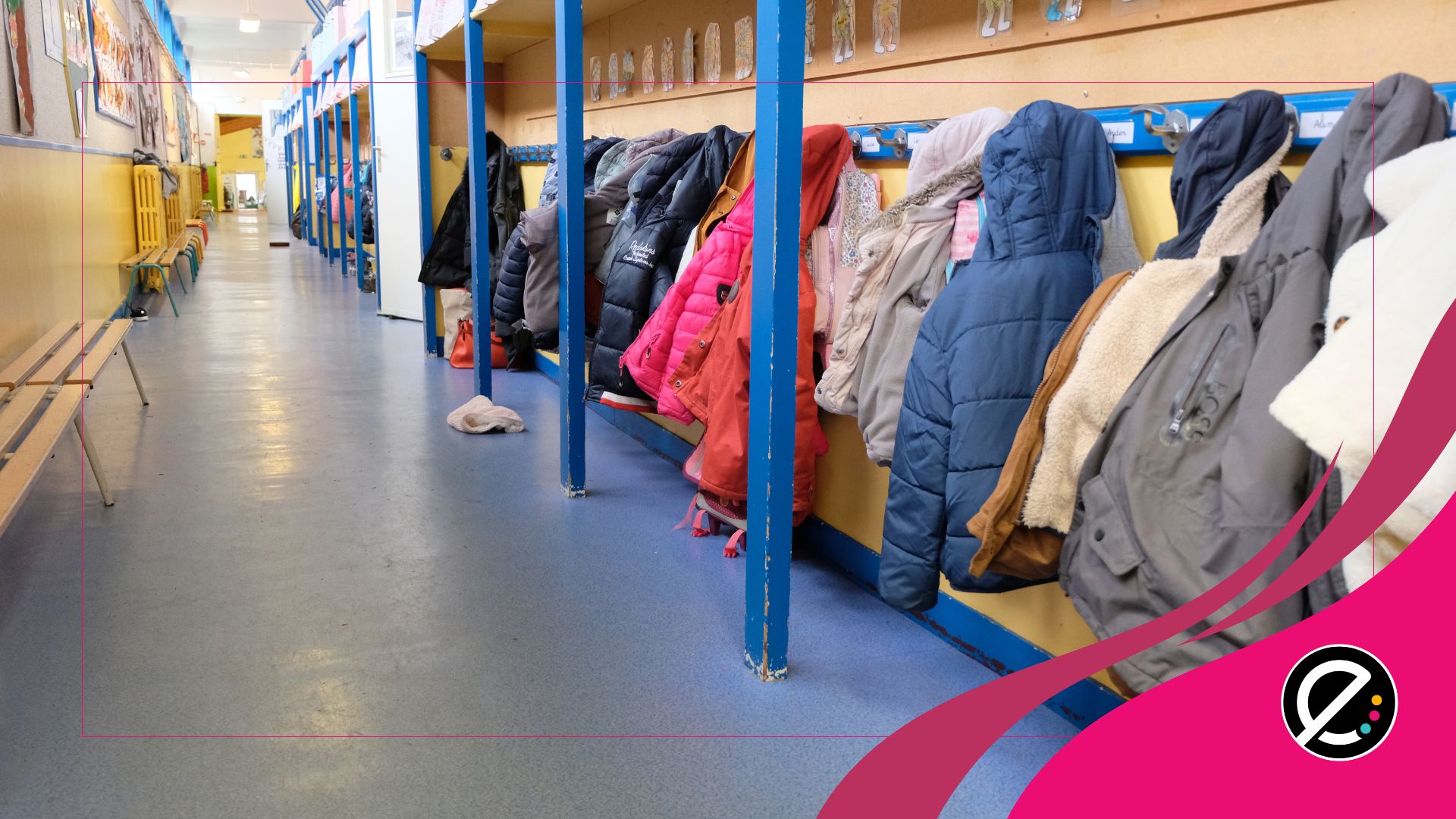L’École des Premières Lettres est encore à l’avant-scène de l’innovation, cette fois-ci dans le domaine du développement durable grâce à son projet de créativité durable. Une initiative pédagogique qui lui vaut d’avoir gagné cette année le Prix de l’innovation en éducation remis par la Fédération des établissements d’enseignement privés (FEEP).
Marie-Pier Cournoyer, la directrice générale de cette école primaire située sur le Plateau à Montréal, a su réunir trois femmes de talent pour mener à bien ce projet : l’enseignante de 5e année Michèle Duguay-Ladouceur, férue de développement durable, Amalia Nanu, technopédagogue, spécialisée en technologies innovantes en éducation, et Ariane-Li Simard-Côté, présidente passionnée du Sommet mondial du design de Paris, qui s’est tenu en 2019.
Les élèves de Mme Duguay-Ladouceur ont d’abord pris connaissance des 17 objectifs des Nations Unies concernant le développement durable. Les enjeux, tels la réduction de la pauvreté, l’inégalité entre les sexes ou la lutte aux changements climatiques, ont été présentés par des œuvres de littérature jeunesse, par le parcours de jeunes personnalités engagées ainsi que par des jeux de discussion. Selon les Nations Unies, ces valeurs constituent la voie à suivre pour un avenir meilleur et plus durable pour tous.
Illustrer les solutions…
Avec l’aide de leur enseignante et de Mme Simard-Côté, les élèves ont ciblé un enjeu qui les touchait particulièrement et sur lequel ils avaient envie de poser une réflexion en équipe. Les 27 élèves de 5e année se sont ensuite familiarisés avec les cinq étapes de l’élaboration de leur solution (un processus appelé pensée conceptuelle ou design thinking) – soit empathie, définition, idéation, prototypage et test. Cette démarche est particulièrement importante au niveau primaire, car elle propose une méthode de résolution de problème qu’ils pourront utiliser en mathématique, en science ou même en résolution de conflit.
Pour illustrer la solution à laquelle ils ont pensé, les élèves se sont tournés vers la technologie, à travers la création 3D et la réalité augmentée. Ils ont modélisé leur solution sous forme de prototype 3D, qu’ils ont ensuite pu manipuler et présenter dans l’espace (via un appareil mobile), ce qui leur permettait d’avoir un retour visuel immédiat sur l’apparence du modèle créé.
Pour résumer d’une certaine façon l’idée véhiculée par l’emploi de nouvelles technologies en classe, Mme Nanu cite Benjamin Franklin : « Tu me dis, j’oublie. Tu m’enseignes, je me souviens. Tu m’impliques, j’apprends ». Et c’est par la pratique, la découverte et l’exploration que les jeunes apprennent, selon celle-ci.
Cependant, Mme Nanu précise que « certaines équipes se sont heurtées à des défis plus techniques, ce qui est tout à fait normal. Le traitement des inégalités entre les hommes et les femmes, par exemple, est une question profondément enracinée dans notre société et je pense que même pour nous, adultes, ce serait difficile d’illustrer une solution pour y mettre fin. Mais les jeunes ont brillamment su se rajuster en cours de route. »
D’autre part, certaines équipes sont parvenues à illustrer des solutions tout à fait étonnantes telles que l’attraction de CO2 par les trottoirs ou l’invention d’un poisson-espion pour détecter la pollution aquatique!
… et les présenter concrètement!
Finalement, les élèves ont eu la chance de présenter leurs solutions devant un jury renommé, composé d’Anne Lagacé, PDG et directrice de création au sein de La Boîte Interactive, Alain Dufour, VP du Forum économique international des Amériques (FEIA), et Joey Hanna, avocat chez HCR UN Canada.
On peut dire que l’École des Premières Lettres ne fait pas dans la demi-mesure.

cadre du projet Innovation, il y a le kiosque Fairmount. Aikaterina Moukas et Caspar Wilkins-Schedler ont
proposé d’installer dans le Mile End montréalais un kiosque aménagé pour vendre de la nourriture et des
vêtements au coût de 25 cents, afin d’aider « les personnes sous la moyenne salariale ».
Crédit : École des Premières Lettres.






